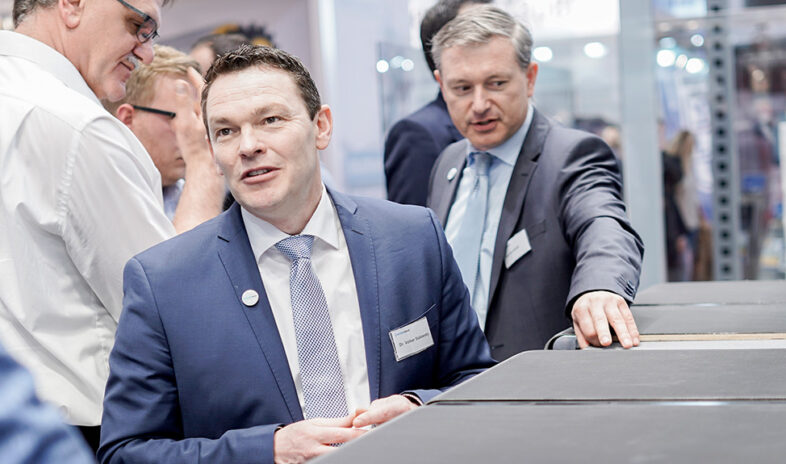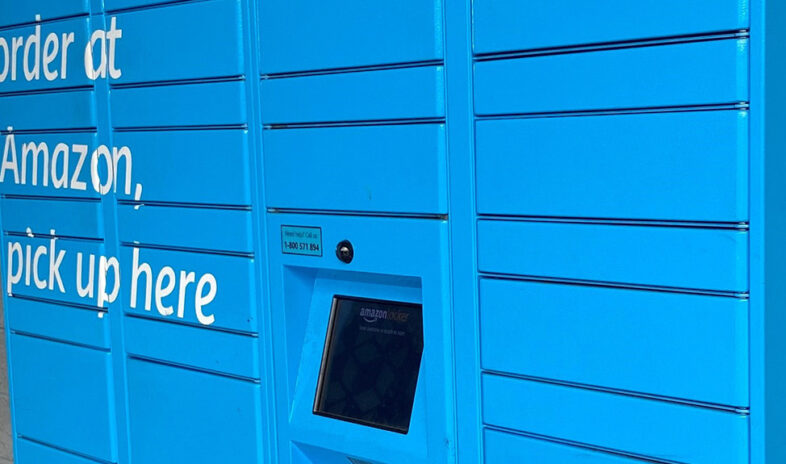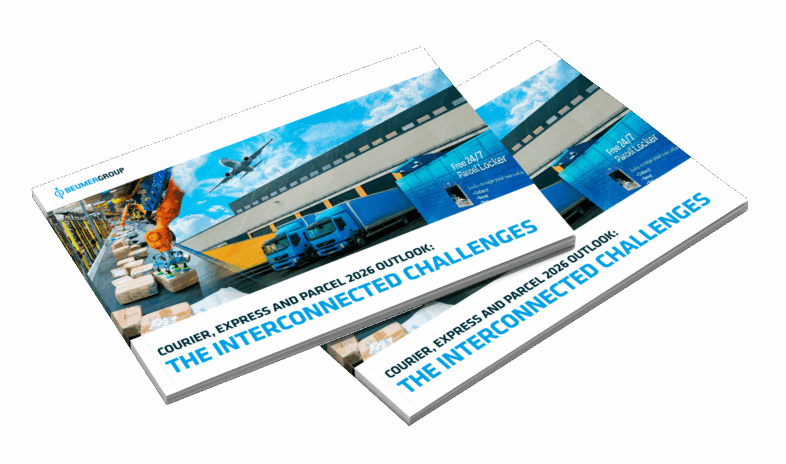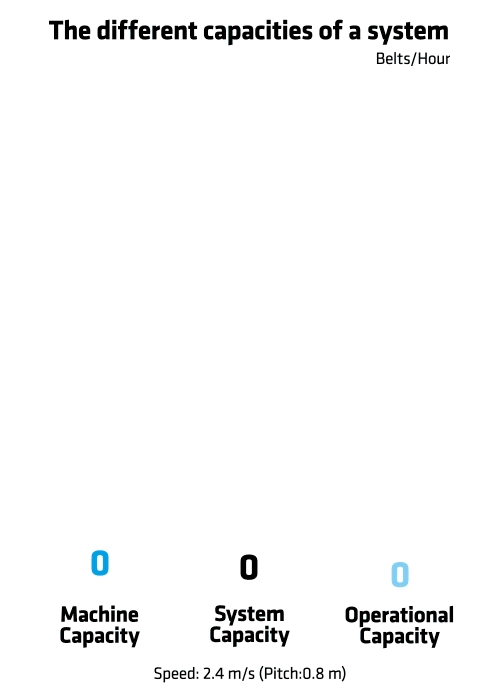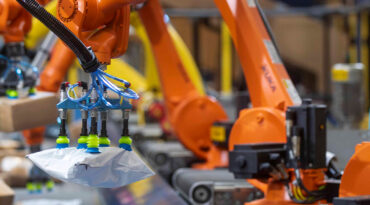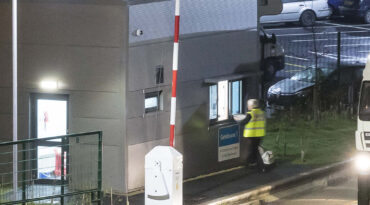System Capacity
Next comes the ‘System Capacity’ (sometimes ‘Practical Capacity’) – generally considered in the CEP industry to be 85 percent of the Machine Capacity, even though it could be as much as 90-95 percent.
A system provider will be confident of reproducing the System Capacity in a test, normally of 15 or 30 minutes in duration, for a customer.
But it’s only really achievable when operators with vast experience manage the system.
The conditions need to be optimal: the system provider ensures all the inbound doors are active and the chutes open. Again the horizontal spacing accommodates the parcel sizes, and there are zero ‘no reads’.
Both the induction areas and sorter have prior ‘knowledge’ of the parcel sizes heading their way, so both have the necessary capacity to perform optimally. Like the whole system, each induction area has its own capacity, and this must be factored in.
Following on from the previous calculations, if the Machine Capacity is 10,800, then the System Capacity is 15 percent lower at 9,180, although it has been known for this to reach 95 percent of the Machine Capacity in testing.
Operational Capacity
The ‘Operational Capacity’ (sometimes ‘Actual Capacity’) is an even lower rate: some 85 percent of the System Capacity.
The Operational Capacity demonstrates to CEP operators the potential of the parcel sortation system they buy – with the proviso they ensure their conditions are as optimal as the ones stated by the system provider.
A system may be perfectly designed for the operations, but if the surroundings aren’t optimised, it won’t fulfil the Operational Capacity. And the best way to optimise the surroundings, so the automation can function at an optimal level, is to follow the guidance of experienced
system providers.
Only by doing all of this can a CEP operator hope to achieve the Operational Capacity – a rate 15 percent slower than the System Capacity. So if the Machine Capacity is 9,180, it will be 7,803.
It might sound simple to follow this advice, but several things commonly go wrong, resulting in the CEP operator only achieving 50-60 percent of the System Capacity:
- The actual capacity needs are different from those understood by the system provider
- The operational advice of the system provider is not followed
- The contract did not include anything beyond the system itself, so no staff training, guidance or maintenance etc
Key factors that affect capacity
Understanding the factors, both internal and external, which can affect the capacity is essential for the CEP operator’s planning, scheduling and decision-making.
The factors can be broken down into four categories:
- Input – the availability and quality of the parcels, labour and system. For example, if there is not a steady flow of parcels, the ‘Unload Capacity’ will not fulfil the ‘Induction Capacity’
- Process – the efficiency of the processes, effectiveness of the quality control measures and layout of facility. For example, having three gates and three conveyor booms on an induction line (instead of the two theoretically needed for the unload capacity to fulfil the induction capacity) ensures there is minimal downtime (30 seconds) when a truck is emptied and needs to be replaced, as there is always another waiting to be unloaded. With two gates, when the trailer is changed, the line will run at a reduced capacity for up to 20 minutes
- Output – customisation of processes and system to level out peaks and troughs in demand. For example, are the parcels a fixed size or a mix of different sizes – predictive analytics will spot patterns in the data that humans can’t, enabling the operator to be better prepared
Environmental – supply and demand can be directly influenced by seasonal, exceptional (like the Pandemic), economic, regulatory, and social and culture factors. For example, the latter underlines the power of the consumer and how their preferences can hit capacity from one day to the next
How a clever design future-proofs the system
Incorporating a clever design from the very beginning, which caters to the highest possible capacity, future-proofs the system capacity-wise.
The clever design need not be fully realised initially – it just needs to realise the needs of the operator. But should the operational needs increase, the system will be easy to scale up due to the clever design.
